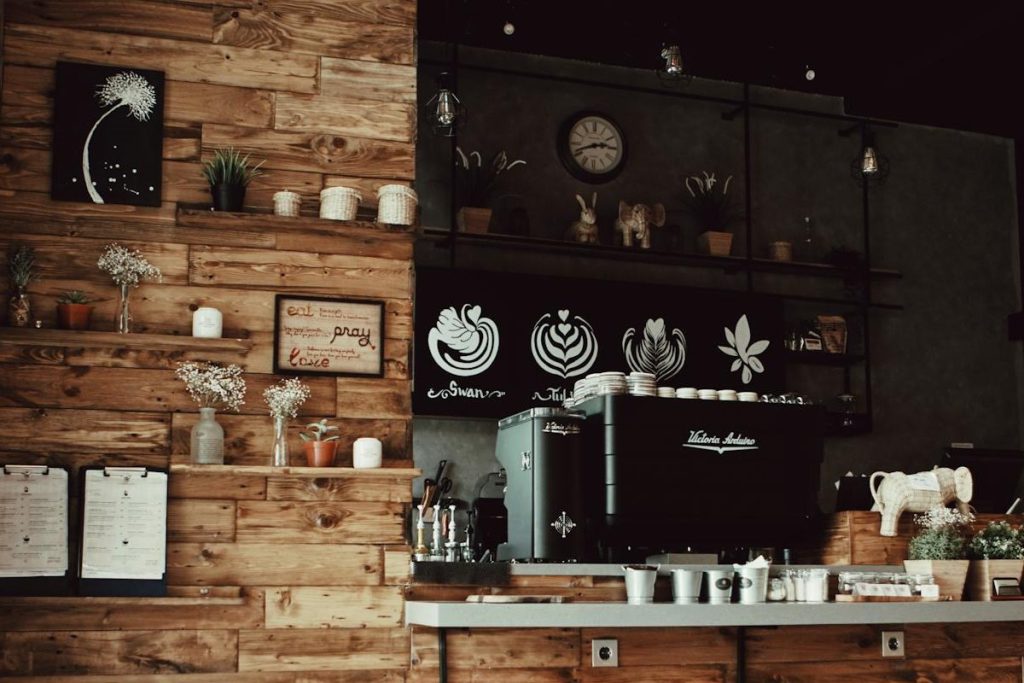
The distinction between the terms “coffee shop” and “head shop” has never been muddier than it is today. The same can be said for the distinction between “coffee shop” and “cafe”. To bring some degree of clarity to the situation, the team here at the 710 Pipes online smoke shop has decided to take a close look at what separates the contemporary coffee house from the contemporary headshop. Enjoy.
About the Headshop
The first head shops sprang up in the US in the 1970s, mostly in college towns, mostly near college campuses. These businesses were not allowed to sell cannabis, which was still a tightly controlled substance. Instead, they sold cannabis paraphernalia. The thinking was that “We’re just selling lifestyle devices. If and how people use them is none of our business.”
The product line of the average head shop has not changed much in the past 50 years. Most (like 710 Pipes’ Denver and Northglenn smoke shops) still sell bongs, pipes, rolling papers, and grinders as their predecessors did. What’s changed is how many of these shops there are today, the fact that they have an online component, and that they offer relatively new products like heady glass and vaping devices. What they (still) don’t sell is a weed to put in those bongs and roll in those papers.
About Coffee Shops
Essentially the traditional coffee shop is the American version of the cafe. The difference is that, unlike a cafe in, say, Paris, where tables are lined up along the sidewalk and people sit for hours watching the world pass by, American coffee shops have always tended to be self-enclosed and focused on getting the customer in, getting their money and getting them out.
In recent years, however, as decades of unwarranted legal handcuffs have finally been removed from marijuana in ‘Merika, some coffee shops have started selling weed to go along with their usual coffee menu. The result is that these days the distinction between the cafe and the coffee shop goes deeper than their attitude toward lounging because you’ll never find weed for sale in a traditional cafe.
Didn’t Coffee Shops Originate in the Netherlands?
Yes and no. No, in that coffee shops have been around in the US since the 17th century. At the time coffee was seen as a patriotic alternative to tea, which was considered a British drink. Most of the earliest coffee houses in the US were located in New England, with colonial Boston being the epicenter.
Yes, in the sense that coffeehouses with cannabis products on the menu alongside cappuccinos and espresso can trace its origins to the Netherlands in the 1970s. The Netherlands had a well-established cafe tradition, but by the 1970s the Dutch government was trying to make a distinction between ‘hard’ and ‘soft’ drugs and so they began to take a more relaxed approach to enforcing laws against marijuana.
The first Dutch coffee houses were opened in response to this more relaxed attitude and offered to sell weed along with the usual cafe fare. They adopted the name “coffee house” to distinguish themselves from the traditional cafe. But just as the Dutch adopted the American term “coffee house” to create separation from cafes, Americans these days are going in the opposite direction, abandoning the term “coffee house” in favor of “cannabis cafe” to create separation with more traditional coffee houses. It’s all so confusing.
The Bottom Line
At its simplest, a headshop like 710 Pipes in Denver is a place where you can buy cannabis paraphernalia, but not cannabis itself. A European coffee house, or American “cannabis cafe”, is a place where you can buy cannabis (alongside coffee and pastry) but not cannabis paraphernalia.
